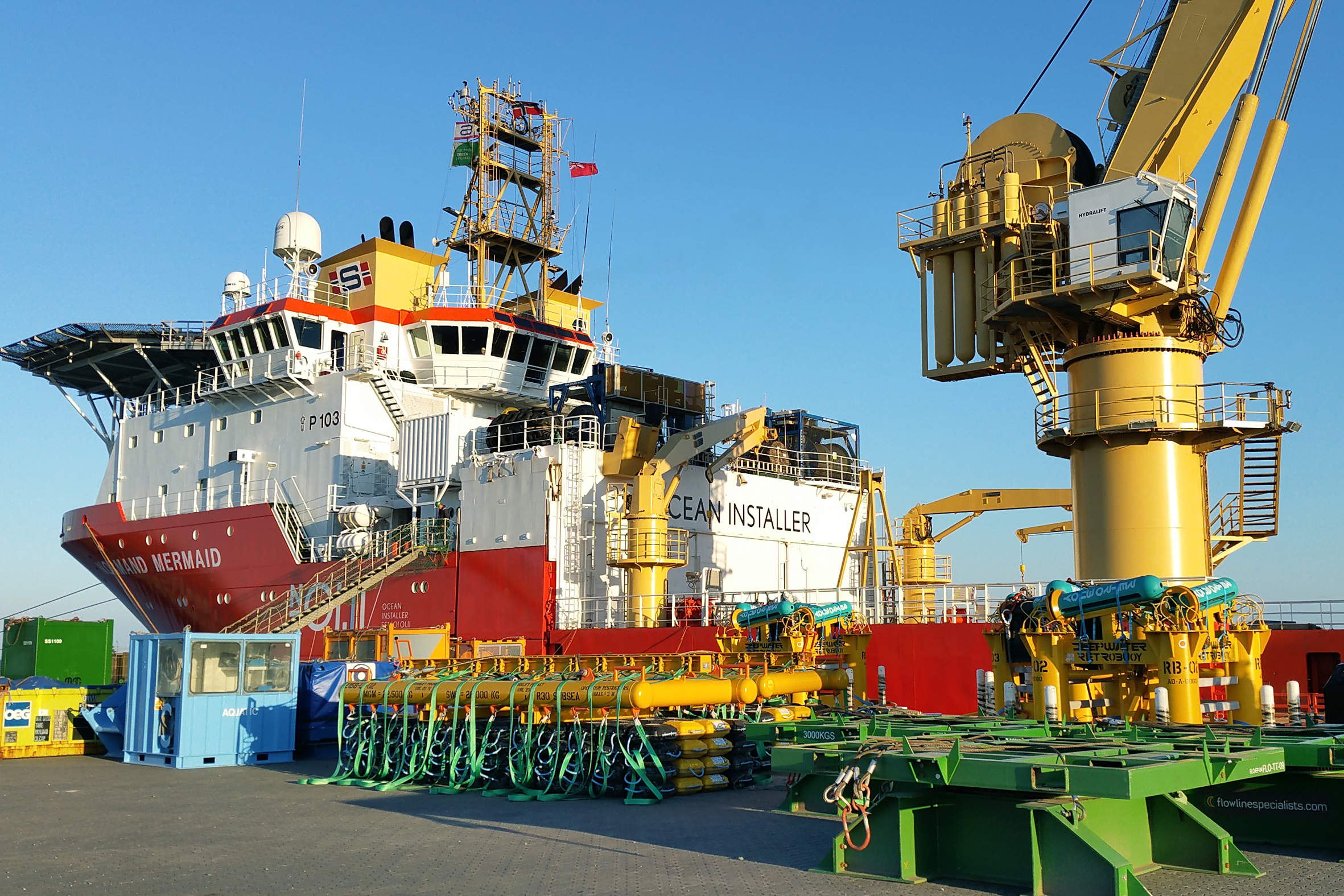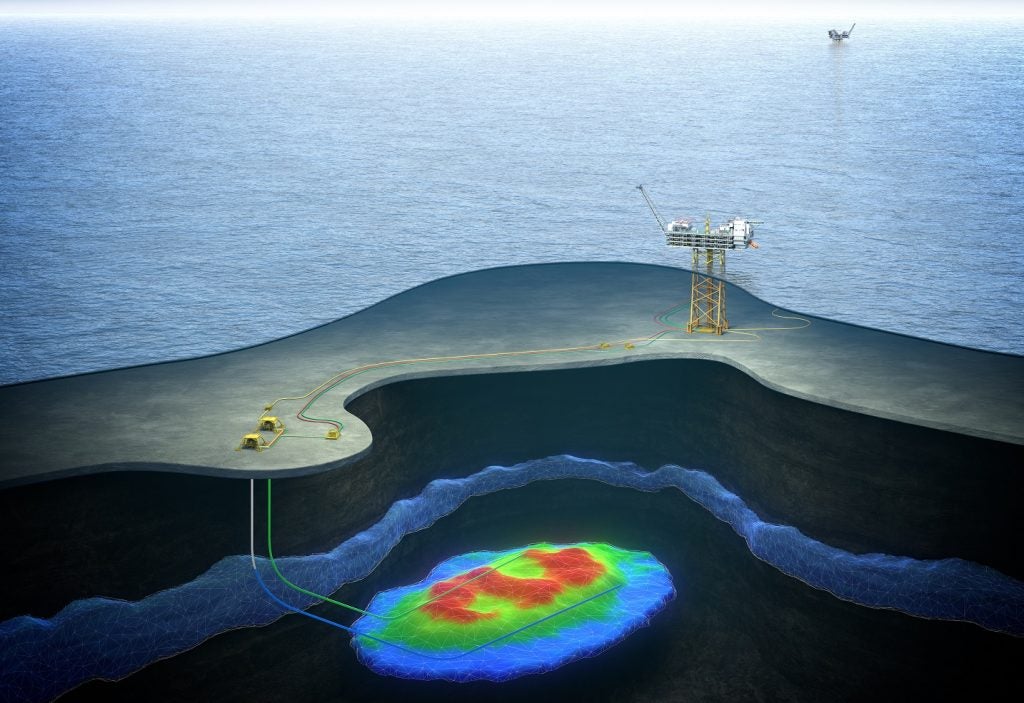
As part of Royal Dutch Shell’s ongoing regeneration projects throughout the Southern North Sea, Pinnacle Consulting Engineers was tasked to design upgrades for the company’s Leman Alpha gas platform, originally installed in the 1960s.
In collaboration with Shell and its specialist contractors, Pinnacle’s engineers had to design and detail two new I-tubes to be installed within empty conductor guides from the platform’s cellar deck to sea bed. The tubes would house cables to the seabed forming part of an Impressed Current Cathodic Protection (ICCP) system to extend corrosion protection, and therefore the serviceable life of the Leman Alpha jacket structures.
Configuring upgrades for aging platforms in harsh environments like the North Sea is no easy feat. New structures must be expertly designed without errors to support and expand existing infrastructure as cost effectively and quickly as possible.
To complete the task without delays, Pinnacle turned to Trimble’s Tekla Structures 3D modelling software for visual clarity and ease of collaboration in managing the multiple steel work design and building required.
Heidi Vella (HV): How did Tekla Structures 3D modelling software aid this particular project?
Steve Insley (SI): It helped primarily with the structural element of the project by creating a digital twin of what was to be delivered on site.
Once the engineers have a digital model of the new structure it can easily be transferred upstream to designers using products like PDMS. Here it can then be cross-checked against the entire model structural elements, such as the piping and electrical points – basically against all the differing aspects of the project.
How well do you really know your competitors?
Access the most comprehensive Company Profiles on the market, powered by GlobalData. Save hours of research. Gain competitive edge.

Thank you!
Your download email will arrive shortly
Not ready to buy yet? Download a free sample
We are confident about the unique quality of our Company Profiles. However, we want you to make the most beneficial decision for your business, so we offer a free sample that you can download by submitting the below form
By GlobalDataThe detailed model of the steel structure element is then passed on to fabricators also using Tekla. The fabricators will produce the manufacturing information to build the design and insure it fits perfectly when it finally arrives at the site.
HV: The project was very collaborative; how did Tekla Structures help streamline so many people working together?
SI: The software helps engineers and designers make and visualise the project. It is the central product that is used and holds the project model, which can be then sent to various different people.
Tekla is a platform that talks to all the different disciplines and integrates into all the different areas of an oil and gas project. For example, it can facilitate collaboration by enabling information to go back and forth between the people using Tekla, as well as other systems, all the way downstream to manufacturing. It is a real lynchpin system between all the different disciplines, people and stakeholders in an oil and gas project.
HV: How does it speed up the design process?
SI: The system itself if full of automation from the get-go. The first thing designers can do is recycle a model created elsewhere. For example, if they have designed a layout of the model in PDMS [another software platform] they can bring the structural elements of it into Tekla.
Tekla then has the structural layout inside its model and has an array of connection components from which engineers can pick connections and join up the steel work, so they know how much to cut; what kind of plates need to be wielded onto the steel; and what kind of bolts they need, etc. Tekla then generates the detailed model to the manufacturers who then have all the information required to make the offshore structure.
It also helps reduce errors because designers and engineers can see potential conflicts and clashes. For example, they can bring different elements of the building together inside the Tekla model and so when everything goes to site, different parts of the structures don’t clash. If you can catch that in the design office, it prevents errors onsite.
HV: Can the software also help with structural and frame analysis?
SI: Tekla’s structures is purely for 3D modelling detailing for structure manufacturing outputs. So, if you are testing the structure against the conditions you need other products like Tekla Structural Designer.
What Tekla Structures can do, however, is send a model and information to the analysis systems that can check with them for wind loads, snow etc depending on what is necessary. The identified changes needed for size or load can then be updated into Tekla Structures.
HV: Tekla Structure 2018 is being released in March, what new applications will it include?
SI: It will include point cloud laser scanning of existing assets. So, if a survey of an offshore oil and gas rig is needed for revamping work or decommissioning, it can be modelled quick and easily by a scan that goes straight into Tekla Structures.
This can then be used to re-model new elements onsite, to know exactly what is already installed in the ocean. This has big benefits for safety and reducing costs because site surveys usually require many people being helicoptered to an oil rig, which can be costly and has associated health and safety risks. Furthermore, if something is missed, workers have to go back out and do it again.
Whereas when doing a laser scan with Point Cloud only one person goes out to do it, they can bring all that information back into Tekla and the software can interrogate it and add additional steelwork as needed to revamp or prolong its life. No one has to be sent back out until the steel work arrives.
Whether it is extension or decommissioning or replacing steelwork, it is really useful to bring information from the sea seamlessly back to the office.




